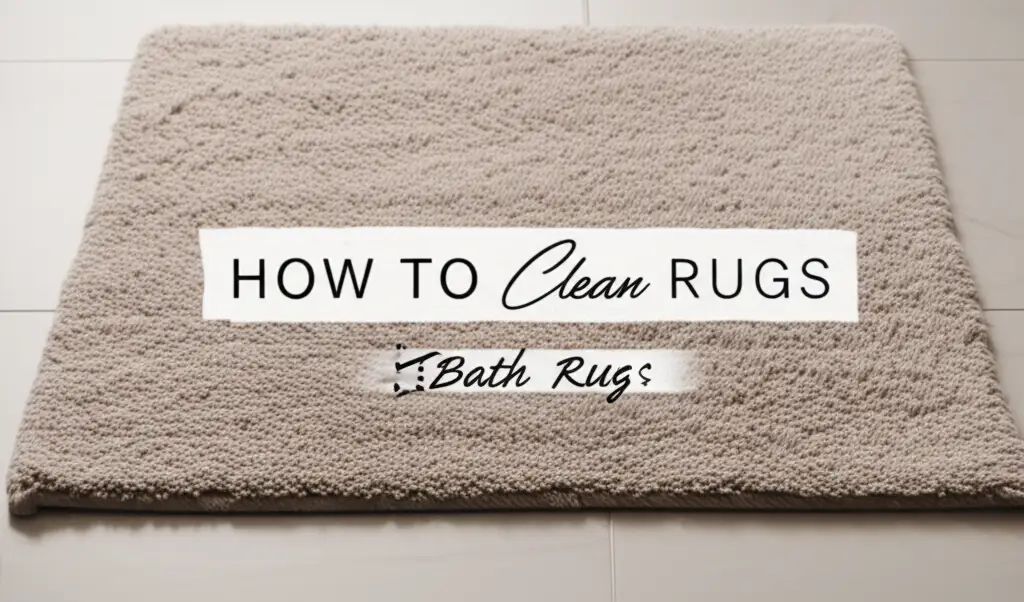· Home Cleaning · 11 min read
How To Clean Wood Blinds

How to Clean Wood Blinds: Restore Their Natural Beauty
Do you have beautiful wood blinds in your home? Over time, dust and grime collect on them. Dirty blinds reduce light and make a room look dull. Keeping your wood blinds clean helps them last longer. It also makes your home feel fresh.
This article shows you how to clean wood blinds. We cover daily dusting and deep cleaning steps. You will learn about the right tools and products. We also give tips on avoiding common mistakes. Read on to make your wooden blinds shine again.
Takeaway
- Dust wood blinds regularly with a soft cloth or duster.
- Use a slightly damp cloth for deep cleaning.
- Always dry wood blinds immediately after cleaning.
- Avoid excess water and harsh chemical cleaners.
- Spot clean stains and address mold promptly.
To clean wood blinds, dust them regularly with a microfiber cloth or duster. For deeper cleaning, use a slightly damp cloth with mild wood cleaner, wiping individual slats gently. Always dry immediately to prevent moisture damage and maintain their finish.
Understanding Your Wood Blinds: Types and Finishes
Before you clean your wood blinds, know what type you have. Wood blinds come in real wood or faux wood. Each type needs specific care. Real wood blinds require gentle methods. Faux wood blinds are more durable.
Real wood blinds add natural warmth to a room. They come from basswood, cherry, or maple. Real wood has a beautiful grain. This material is sensitive to water. Too much moisture causes warping or cracking. You must protect their finish.
Faux wood blinds look like real wood. They often use PVC or composite materials. These blinds handle humidity well. They are great for bathrooms or kitchens. Faux wood blinds are easier to clean with water. They resist warping. Always check if your blinds are real or faux wood before starting. This helps you choose the right cleaning method.
Gathering Your Cleaning Toolkit: Essential Supplies
Having the right tools makes cleaning your wood blinds simple. You do not need many items. Basic supplies protect your blinds. They also help you clean effectively.
First, you need a soft cloth. Microfiber cloths work best. They trap dust well. They are gentle on wood surfaces. Avoid abrasive cloths. These can scratch the finish.
Second, get a duster. A lamb’s wool duster or a blind-specific duster is helpful. These tools fit between slats easily. They pick up loose dust. A vacuum cleaner with a brush attachment also works. Use it on a low setting.
Third, prepare a gentle cleaning solution. A mild dish soap mixed with water is often enough. Use only a tiny amount of soap. A specialized wood cleaner is also a good option. Always check the cleaner’s label. Make sure it is safe for wood. Never use harsh chemicals. Ammonia or bleach damages wood. Keep a dry towel handy. You will need it to dry the slats immediately after cleaning. Having these tools ready saves time. It ensures a safe cleaning process for your wood blinds.
Daily Dusting for Wood Blinds: Quick, Easy Maintenance
Regular dusting keeps your wood blinds looking fresh. This simple task prevents dust buildup. Heavy dust is harder to remove later. Daily dusting protects your blinds from grime. It takes only a few minutes.
To start, close your blinds completely. Adjust them so the slats lie flat. This creates a flat surface for dusting. It makes the job much easier. Use a clean, dry microfiber cloth. Wipe each slat from end to end. Move across the entire blind.
You can also use a duster designed for blinds. These tools have multiple prongs. They clean several slats at once. Hold the duster firmly. Move it across the closed blinds. Remember to flip the blinds. Dust the other side of the slats too. Dust collects on both sides. Regular dusting extends the time between deep cleans. It keeps your home cleaner. It also helps your wood blinds last longer.
Deep Cleaning Wood Blinds: Tackling Accumulated Dirt and Grime
Sometimes, daily dusting is not enough. Wood blinds gather dirt and grease over time. Deep cleaning removes stubborn grime. It revitalizes your blinds. This process takes more effort. However, it gives excellent results.
Start by vacuuming your blinds. Use a soft brush attachment. Set the vacuum to a low suction. This removes loose dirt. It prepares the surface for washing. Next, mix a gentle cleaning solution. Use a small amount of mild dish soap with warm water. Alternatively, use a specialized wood cleaner. Remember to check if your cleaner is safe for wooden surfaces. You can learn more about general wood surface cleaning here.
Lightly dampen a clean microfiber cloth with the solution. Wring out excess water. The cloth should feel almost dry. Wipe each slat individually. Work from the top down. Pay attention to both sides of the slat. Immediately follow with a dry cloth. Drying prevents water damage. This step is very important for real wood blinds. Too much moisture causes warping. Deep cleaning makes your blinds look new. It protects the wood finish.
Spot Cleaning for Stains on Wood Blinds
Stains on wood blinds need immediate attention. Different stains require different approaches. Acting fast prevents permanent damage. Always test cleaning solutions in a hidden spot first. This checks for color changes or damage.
For general spots, use a slightly damp cloth with mild soap. Gently rub the stained area. Do not scrub hard. Hard scrubbing damages the wood finish. For tougher stains like food spills, a solution of vinegar and water might help. Mix equal parts white vinegar and water. Dampen a cloth. Dab the stain lightly. For common household marks, you can explore tips on how to clean crayon off wood or other similar stains. If you have greasy stains, you might want to look into how to clean wood cabinets, as they often face similar grease buildup. Always dry the area thoroughly afterward. For more detailed advice on various marks, refer to our guide on how to clean stains on wood.
Dealing with Mold and Mildew on Wood Blinds
Mold and mildew pose a serious problem. They grow in damp environments. They look like black or green spots. Mold damages wood over time. It also affects air quality. Removing mold promptly is important.
First, wear gloves and a mask. This protects you from spores. Mix a solution of white vinegar and water. Use equal parts. Vinegar kills mold effectively. Dampen a cloth with the solution. Wipe the moldy areas gently. Do not soak the wood. For stubborn mold, you can consider a stronger solution. Mix borax with water to form a paste. Apply it to the mold. Let it sit for a few minutes. Wipe it away. You can find more detailed instructions on how to clean black mold off wood.
Always dry the blinds completely. Use a fan or open windows to air the room. This prevents mold from returning. Address the source of moisture. If mold is widespread, consider professional help. For general tips on removing mold from wood surfaces, our guide on how to clean mold off of wood furniture provides more insights. Proper handling prevents health issues and protects your blinds.
Protecting and Finishing Wood Blinds: Keeping Them Pristine
Cleaning your wood blinds is only half the battle. Protecting them ensures their long life. A good finish keeps them looking new. It also prevents future damage. Wood blinds need ongoing care.
After cleaning, consider applying a wood conditioner. This product moisturizes the wood. It helps prevent drying and cracking. Apply it with a soft cloth. Buff gently until absorbed. Some wood conditioners also add a protective layer. This layer resists dust and minor spills.
Another option is wood polish. Polish enhances the shine of your blinds. It also provides some protection. Choose a polish specifically for wood. Avoid silicone-based polishes. They can build up over time. This makes the surface sticky. It attracts more dust. Apply polish sparingly. Buff it to a natural luster. Protecting your wood blinds saves money. It keeps them beautiful for years. Regular protection is key to their longevity.
Common Mistakes to Avoid When Cleaning Wood Blinds
Cleaning wood blinds seems straightforward. However, common mistakes can damage them. Knowing what to avoid saves you trouble. It protects your investment. Pay attention to these pitfalls.
First, never use too much water. Real wood swells and warps when wet. It can also crack or mold. Always use a damp cloth, not a wet one. Immediately dry the slats after wiping. This prevents moisture from seeping into the wood.
Second, avoid harsh chemicals. Bleach, ammonia, or abrasive cleaners ruin wood finishes. They strip protective layers. They can cause discoloration. Stick to mild soap and water. Use cleaners specifically designed for wood. You can find many recipes for how to clean wood furniture with vinegar which are often gentle.
Third, do not scrub aggressively. Hard scrubbing scratches the wood. It removes the finish. Use gentle wiping motions. Let the cleaner do the work. Fourth, do not ignore immediate spills. Liquid left on wood causes stains. Wipe spills instantly. These simple precautions keep your wood blinds looking their best. They extend the life of your blinds significantly.
Maintaining Your Wood Blinds Long-Term: Tips for Lasting Beauty
Long-term maintenance keeps your wood blinds in top condition. Consistent care prevents major issues. It ensures your blinds remain a beautiful part of your home decor. Regular habits make a big difference.
Establish a regular dusting schedule. Dust your blinds weekly or bi-weekly. This prevents heavy buildup. It makes deep cleaning less frequent. Integrate it into your regular cleaning routine. This simple step is vital.
Consider humidity levels in your home. Extreme humidity or dryness harms wood. Use a humidifier in dry climates. Use a dehumidifier in humid climates. This maintains stable moisture content in the wood. Stable moisture prevents cracking or warping.
Rotate your blinds occasionally. This exposes different parts to sunlight. Sunlight can fade wood over time. Rotating helps keep the color even. Check the cords and mechanisms regularly. Ensure they work smoothly. Lubricate them if needed. These small actions contribute to the longevity of your wood blinds. They protect your investment. Your blinds will look great for many years.
FAQ Section
Q1: Can I use water to clean real wood blinds? A1: You can use a very slightly damp cloth. Wring out all excess water. Real wood absorbs moisture, which can cause warping or cracking. Always dry each slat immediately with a separate dry cloth after wiping. Avoid soaking the wood or leaving it wet.
Q2: How often should I clean my wood blinds? A2: Dust your wood blinds weekly or bi-weekly to prevent buildup. Perform a deeper clean every few months. The frequency depends on your home environment. Homes with more dust or pets might need more frequent cleaning.
Q3: What should I do if my wood blinds warp? A3: Warped wood blinds are difficult to fix. Prevent warping by avoiding excessive moisture and direct sunlight. If a slat warps, you might try placing a heavy object on it for a few days to flatten it, but success is not guaranteed. Replacement is often the only solution for severely warped slats.
Q4: Can I use furniture polish on wood blinds? A4: Yes, you can use furniture polish designed for wood. Choose a non-silicone-based polish. Apply it sparingly with a soft cloth. Buff the blinds to a shine. This protects the wood and adds luster. Avoid over-polishing, as it can cause buildup.
Q5: Are faux wood blinds easier to clean than real wood? A5: Yes, faux wood blinds are generally easier to clean. They are moisture-resistant and less prone to warping. You can use a slightly wetter cloth or mild soap and water without as much risk. They are more durable for areas with high humidity.
Q6: How do I remove sticky residue from wood blinds? A6: For sticky residue, try a small amount of mineral spirits or rubbing alcohol on a clean cloth. Test in an inconspicuous area first. Gently wipe the residue. Immediately follow with a clean, damp cloth and then dry thoroughly. Avoid harsh scrubbing.
Conclusion
Cleaning wood blinds helps maintain their beauty and extends their life. We have discussed daily dusting and thorough deep cleaning methods. You now know the right tools to use. We also covered how to tackle tough stains and mold. Remember to use gentle products and avoid too much water.
Regular care keeps your blinds looking new. Protecting them from moisture is key. By following these steps, your wood blinds will continue to enhance your home. Their natural beauty will shine through. Make cleaning your wood blinds a simple part of your home care routine. Take action today and see the difference.
- wood blinds
- cleaning wood blinds
- wooden blind care
- dust wood blinds
- maintain wood blinds
- deep clean wood blinds




